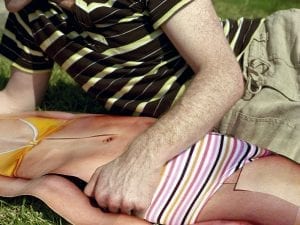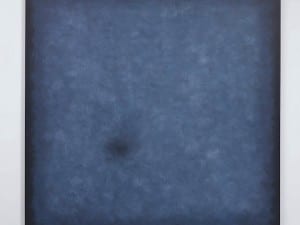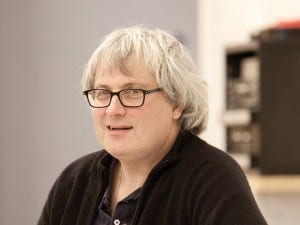A new visually stimulating exhibition at the V&A explores the concept and craftsmanship of luxury, and the meaning of this in a modern, materialistic society.
Even a casual flip through a newspaper or a quick browse of almost any website is enough to demonstrate that luxury is one of the defining concepts of our time. From fashion adverts to holidays, from cars to packaged puddings, there are very few consumer-oriented products or services that aren’t marketed in some form or another as being “luxurious”. In spite of the economic crisis of 2008, and recent reports of the widening gap between the world’s richest and poorest people, luxury remains the quality to which almost all products, and almost all consumers of those products, seem to aspire. However, it is also a concept that is rarely examined with seriousness or depth. When luxury is discussed, commentators on the one hand seem to dismiss it as mere commodity fetishism and shallow materialism, while on the other hand, advocates of luxury take the position of Enlightenment philosopher David Hume, who wrote positively of it as a kind of avant garde of comfort that over time improves living conditions for the whole of society. The V&A exhibition What is Luxury? examines how the concept of luxury operates today and what it takes for an object to be considered luxurious.
A co-production between the V&A and the Crafts Council, the exhibition might be expected to focus exclusively on luxury objects and the refinement of craft that goes into their creation. However, curator Leanne Wierzba is clear that while there are many exquisite objects included in the show, the scope of the project is much wider: “The relationship between luxury and craftsmanship is very interesting and it raises a lot of questions. We were keen to explore the nature and limits of the connection as well as the broader implications. For example, it was important for us to look at ethical issues. Indeed, luxury is at the heart of a lot of social debate and it was necessary for us to address the effects of technology on popular luxury and consumer culture.”
In the first section of the exhibition, entitled Creating Luxury, pairs of objects are presented together in the context of a word or phrase commonly
associated with the idea of luxury, such as “non-essential”, “extraordinary”, “innovation” and “precision”. The diversity featured in this section in a sense destabilises our ideas of what a luxury object is. For some, the Hermès Talaris saddle, innovatively designed from carbon and titanium and utilising injected foam for comfort, will be the height of luxury, while for others a 17th century Venetian liturgical chasuble, exquisitely embroidered with needlework lace and mounted on silk, will be the ultimate in splendour.
The contrast in these two objects is stark, and highlights some of the ways in which our concept of luxury has changed in the centuries that divide their creation. Whereas the Hermès Talaris saddle displays exquisite craft and technological expertise, it is an object that is marketed to equestrian enthusiasts who would like to enjoy the very best. While someone who doesn’t enjoy horse riding may admire the object’s beauty, they are unlikely to appreciate the ultimate luxury it symbolises, which is connected to leisure time and to a feeling of freedom and exhilaration. In contrast, the exceptionally precise handiwork of the Venetian chasuble was intended as a symbol of the splendour of the Roman Catholic Church, designed to provoke awe and wonder at its magnificence and majesty. The luxury of this object was intimately connected to its perceived closeness to the divine and holy.
What connects these two pieces, given the gulf in time and context, is that while they are both objects that are intended to be used for a simple and clear purpose, the attention to detail and care that has gone into their design and construction far exceeds their utilitarian purpose and transforms them into objects of indulgence and desire. This is a hallmark of many of the items on display in the exhibition, and it points the audience to the etymology of the term “luxury”, which is derived from the Latin luxus, meaning “excess”.
Italian designer Giovanni Corvaja’s piece Golden Fleece (2009) takes both preciousness of material and painstaking craft skills to extremes. The object is a hat, constructed from 150 km of golden and platinum thread, which the designer makes himself from gold bars worked over time to the thickness of human hair. It took 10 years to develop the materials to create the hat and 2,500 hours to actually construct it. As Wierzba comments, “It’s an object that could not possibly be valued or have an economic value that would represent the investment of the designer himself.” While Corvaja’s work uses precious materials, the intense and time-consuming process he has applied to them in a sense transcends the preciousness of the material, and questions exactly what it is that makes this item luxurious. Luxury has the power not just to reinforce societal value systems but also to destabilise and question them.
A similar approach is taken by Dominic Wilcox in his work Luxury Skimming Stones (2009). Here, gold has been moulded to create curiously beautiful pebbles that at once seem to revel in the incongruity of the form and the material, while also making us think about the question of value. By drawing on a rich complex of cultural associations, such as childhood memories, leisure time and pre-digital entertainment, Wilcox unlocks a great deal of sentimental and symbolic value. Wierzba comments that “the gold in these objects is a decoy because it signifies worth, but the value is in something quite different from the gold. Luxury isn’t so much just about things and their consumption but also about the conditions in which objects are produced and the experiences and personal stories that are evoked through them.”
Another piece that poses questions about the preciousness or otherwise of material is artist Nora Fok’s necklace Bubble Bath (2001). Using nylon filament, which is effectively fishing line, she transforms this everyday material into an object of exquisite luxuriousness, desirability and value. The necklace is a linked bubble-like structure of 1,000 hand-knitted “bubbles” formed around the equally everyday material of children’s marbles. This is something that Fok explores even in her playful title, referring to an affordable but luxurious ritual such as taking the time to enjoy a bubble bath. Her piece calls to mind the simple experience of a body lathered in transparent spheres, emerging from a bath, or a child playing with the bubbles on their skin. Fok’s work, therefore, points towards luxury as something that needn’t be directly or uncomplicatedly linked to commercial value, and that is all around us.
Alongside precision and craft, another aspect of lavishness can be found in the innovative application of technology. Dutch fashion designer Iris van Herpen fuses technological expertise with an intense creativity and a commitment to exquisite craft and handiwork to create a compelling and unquestionably luxurious vision of contemporary haute couture. Her work is represented in the exhibition by a dress from her 2013 couture collection. It is made from laser cut acrylic mesh and fronds, silicone and wool. The fronds stick out horizontally all over the garment, making it look like a stunning cactus, warning: don’t touch this. The dress was created using technology such as laser cutting in order to create a dazzling precision that is essential to the luxuriousness of the finished product, while it also references the natural world and the history of fashion with a lavish fan-shape across the shoulders.
Danish artist Steffen Dam also references the natural world in his work Jellyfish Installation (2010). Created entirely from glass, this gives a convincing illusion of specimen jars containing jellyfish-like creatures suspended in liquid. The piece seems to relate to the Kunstkammers, or Cabinets of Curiosities, that were popular among the aristocratic classes and rich merchants of Renaissance Europe as a way of demonstrating their worldliness and wealth. Here, Dam recreates that same sense of wonder and surprise through his meticulously imagined creatures which are close enough to real animals to evoke a deep emotional response while detached enough to seem strange and otherworldly. The effect is a blend of realism, fiction and baffling creative skill that sparks the imagination.
In Fragile Future Concrete Chandelier (2010), Lonneke Gordijn and Ralph Nauta of Dutch design partnership Studio Drift have created a luxury object that resonates with powerful symbolism about time, nature and ecology. The chandelier incorporates a number of incongruous materials: an MDF block which is painted to imitate concrete, a phosphorous bronze framework which carries the electrical current, LED lightbulbs, and real seed heads from post-flowering dandelions, which are known as “dandelion clocks” after the children’s game where the number of breaths it takes to blow all the fronds off the seed heads is said to tell the time. Here, the fronds from the dandelion seed heads are glued to the LED lightbulbs, thus making it impossible for them to be blown free and stunting their intrinsic life-generating potential.
In their pieces from the series Imaginary Architecture (2014), Spanish designers El Ultimo Grito present elaborate blown glass forms that seem to draw on imagery from chemistry labs and science fiction films. These shapes, which incorporate funnels, tubes and tunnels, are mapped out, as the title would suggest, into imaginary buildings and architectural structures.
Rather like the work of a theoretical architect such as Shusaku Arakawa, it’s hard to see how any of these projects would be realisable in real life; however, by stretching the imaginative muscles of the viewer and literally experimenting with 3D, these works challenge a received wisdom about built environments and the limits of what is possible. There is something in them of the luxury of experimentation and doodling, of taking time out from daily pressures to simply imagine a seemingly impossible structure, rather as one might have designed an imaginary palace or castle as a child. The ultimate luxury: the ability to design and produce a built environment in which to live without reference to constraints or practical considerations of any kind. The luxury value in these objects, then, is in their meaningfulness and the liberating impact they have on the viewer’s perception and imagination.
The fluidity and shifting nature of our perceptions of luxury is explained by Wierzba: “Luxury is always changing, particularly in relation to value and what we think of the materials and skills involved in its production.” The strand in the exhibition entitled A Future for Luxury is where changing attitudes are most overtly considered. In particular, this strand focuses on which commodities might be considered luxurious in the future. The Rise of the Plasticsmith (2014) by Gangjian Cui, a recent graduate of The Royal College of Art, looks at plastic as a material that may become especially prized and rare in a post-industrial China. The artist creates a hypothesised future scenario through developing documentary material relating to an imagined world where the scarcity of oil has dramatically impacted on the economics of the city of Daqing. In this projected future, plastic has become a highly prized and valuable resource. By manufacturing tables and chairs made of plastic using crude joining techniques, he looks at ways in which design is affected by the availability of materials, and considers the global economic and ecological factors at play in defining what is luxurious.
Another piece also explores the ethics of luxury and commodification, which are central to the exhibition’s curatorial ethos. Gabriel Barcia-Colombo’s DNA Vending Machine (2013), critiques the ethical concerns of the ways in which our privacy is invaded through global trading in DNA and suggests that perhaps our rarest and greatest luxury is privacy, which, in an ever more digitised and ever more surveillance-oriented world, is becoming all but lost.
It is a testament to the seriousness with which the curators of What is Luxury? have addressed their titular question that the exhibition arrives at such a nightmarish concept of what luxury might be or might become. Yet, by providing a framework to consider a concept that is all-pervasive in our society, What is Luxury? ultimately offers viewers what is perhaps the greatest luxury of all: the space and time to think. What is Luxury? is presented at the V&A in London from 25 April to 27 September. Visit www.vam.ac.uk.
Colin Herd





